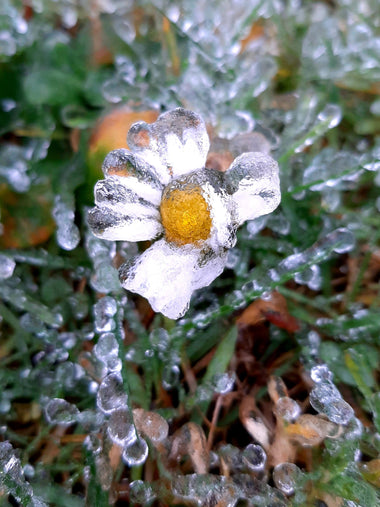Guest blog post from our friend Stacy of Stacy White Photography:
As the seasons change, so do our photography subjects! While winter is a beautiful time of the year, it poses different challenges in photography. Many things you do in the winter are similar to the rest of the year, with a few exceptions.
Here are a few tips to make your winter photography season a little easier.
1. Prepare for the Environment

While winter weather can be unpredictable, make sure you plan ahead for yourself – and your gear. The most important thing to do is keep yourself warm. If you plan on shooting in the cold weather, ensure you have appropriate clothing, including shoes, socks, and a hat. Layers are always a good idea and a definite must if you plan on being out early or late in the day. Since you'll want to keep your hands protected while in the field, make sure you have a park that allows you to hold your camera, adjust your settings, and access your phone. If it's frigid outside, consider packing some hand warmers to keep in your pockets as well.
Next, think about your gear once you've packed to protect yourself from the elements. Batteries drain quicker in colder temperatures, so ensure you have extra batteries on hand.
2. Know your Location

If you're like me and live somewhere that doesn't really have winter, you might consider hiring a guide to take you out and show you some locations. In some places, it's necessary, but it's also handy if it's somewhere you have not traveled to before to find the spots the locals love instead of just visiting the locations you see on Instagram.
3. Avoid Lens Fog
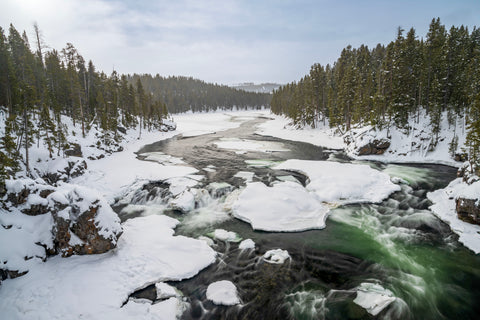
Have you ever experienced the familiar sight of fogged-up windows when getting into a cold car on a winter morning? Your camera can experience a similar reaction if not handled with care in changing temperatures. Just as your car windows fog up when transitioning from warmth to cold, your camera lens can, too, which will impact the clarity of your shots. To prevent this, store your camera in the trunk or backseat of your vehicle, allowing it to acclimate gradually to the colder temperatures. Doing this ensures your camera remains clear and ready to capture
winter scenes without a fogged lens.
4. Camera Adjustments for Photos with Snow
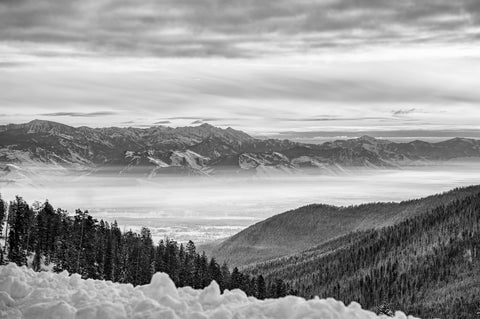
Although it seems like a sunny day with snow-covered fields would have great light for photos, the snow makes everything too bright for your camera, which will try to underexpose your images. Matrix or evaluative metering won't work well in these situations, so try using spot or center-weighted metering mode to capture the correct exposure on your subject.
When you change the metering mode, you'll need to watch for blown-out highlights. It would help if you got into the habit of checking your histogram and making sure that you don't have that dreaded spike on the far right, meaning that you have no detail in the whites of your images. Another easy way to avoid this is to turn on highlight warnings or "the blinkies" in your camera. This way, when you view your image on your LCD, anything without detail ("blown out") will blink, allowing you to adjust and decrease your exposure in those areas.
Once you get this dialed in, you might notice that your image is darker than you would like. An easy way to remedy this is by utilizing the exposure compensation feature on your camera by adding +1 or +2 exposure compensation to add light without overexposing your image.
The snow will also trick your white balance! If you shoot in auto white balance and have a snow-filled landscape with a blue sky, your image will probably have a bluish tint. If you check your LCD and this happens, try using the Cloudy or Shade preset. This should warm up your image and remove the blue tint.
5. Capturing Falling Snow

One of the most unique photo opportunities winter provides is capturing the snow as it's falling. As with waterfalls, the look will depend on your shutter speed. If you want to freeze snowflakes mid-air, use a fast shutter speed (1/250 second). If you use a slower shutter speed (1/15 second), you'll blur the snow – how much will depend on how much snow is falling.
6. Clouds and Overcast Days
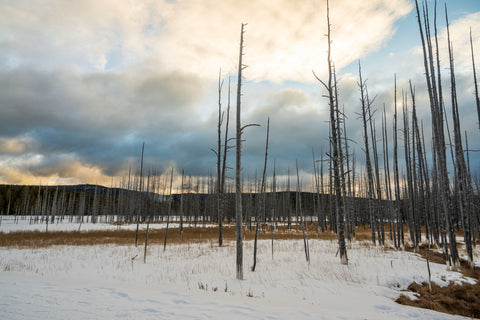
Cloudy days are your friend! While most of the time you want sunlight and fluffy clouds, overcast days can add drama or moodiness to the scene. If your sky is flat and doesn't add anything to the image, try shooting without showing much of the sky, or consider converting your image to black and white.
7. Look for Little Details
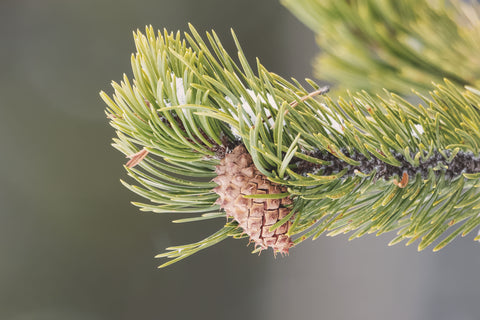
Not all winter scenes have to be dramatic landscapes or wildlife – it's a great time to try some macro images as well! Subjects could be close-ups of snowflakes, icicles, pinecones, or bare tree branches – the possibilities are endless!
Embrace the winter season and the new possibilities it lends for unique images. Before you know it, spring will be here, so take the time to equip yourself with the right gear, clothing, and settings and embark on an adventure!







